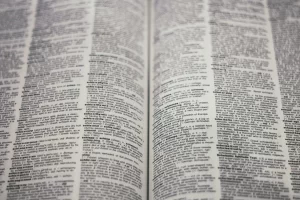COMMON CANDLE MAKING TERMINOLOGY
Whether you’re an experienced candle maker or just starting your journey in this craft, being well-versed in candle terminology is essential. This language not only facilitates your success in the industry but also aids in your growth as a skilled candle maker.
Similar to acquiring proficiency in any language, certain candle making terms can be initially perplexing. Phrases like afterglow, tart, mushrooming, and frosting are commonly encountered in the realm of candle making, and you’ll gradually become accustomed to identifying them, among others.
To simplify this process, we’ve assembled an exhaustive glossary encompassing all the essential terminology you require to excel in the art of candle making. This resource will serve as your guide, ensuring you navigate the world of candle making with confidence and clarity.
Familiarize Yourself with Frequently Used Candle Making Terminology
Burn Cycle: Distinct from Burn Rate or Burn Time, the burn cycle involves lighting a candle for four hours, extinguishing it, allowing it to cool, and often repeating the process. This meticulous procedure is primarily employed to assess wick performance and for comprehensive candle testing.
Burn Rate: This term denotes the quantity of wax consumed per hour, measured in grams. Burn rates vary based on vessel size, wax type, and the heat emitted from the wick. A useful guideline is that smaller candles with diminutive wicks can burn for seven to nine hours per 1 ounce of wax, while those with larger wicks typically last around five to seven hours per 1 ounce of wax.
Burn Test: Also known as the Test Burn, this controlled and structured burn is a crucial step in the candle-making process. It’s employed to ascertain the appropriate wick size. After choosing wax, vessel sizes, and fragrances, conducting a burn test is imperative to determine the ideal wick size and type for your specific candle.
Burn Time: This term encompasses the total duration a candle takes to burn completely. A myriad of factors, including wax type, wick size, and vessel dimensions, contribute to the variation in burn time.
Carbon Build-Up: Commonly referred to as Mushrooming, this phenomenon involves the accumulation of carbon on a wick. While it’s more prominent with cotton wicks, Wooden Wicks experience less carbon build-up. To prevent this on Wooden Wicks, regular wick trimming and carbon buildup removal are essential.
Cold Throw: This pertains to the fragrance emitted by an unlit candle. It’s a subjective preference for each candle maker, with certain waxes delivering a superior cold throw. For instance, 100% Soy Wax is known for its relatively weaker cold throw.
Color: An apt visual descriptor of a candle’s appearance and hue.
Congealing Point: The temperature at which liquid wax transitions into a solid state.
Drop Melt Point: This term signifies a reference temperature at which wax shifts from solid to liquid. Although wax blends consist of multiple melt points, the “Drop Melt Point” offers a temperature benchmark for the wax’s transformation.
Dual Wicks: Part of our Adhered Wicks collection, the Original Dual Wick entails two wicks of identical thickness bonded with a proprietary non-toxic adhesive. During burn testing, there’s a potential risk of clogging with oilier waxes such as Soy Wax.
Finishing (with a heat gun): This technique involves applying a heat gun to the top of the wax to rectify any sinkholes or imperfections after the initial setting.
Flash Point: The temperature at which a fragrance can ignite when exposed to a spark or flame. This critical information is usually found on the Fragrance Safety Data Sheet or MSDS.
Fragrance Load: Also known as Scent Load, this indicates the percentage of fragrance concentration in a batch of candles. A recommended range is 8-10% fragrance per batch.
Frosting: Also dubbed “Bloom,” this refers to the formation of white crystals on the surface of natural waxes (like soy) caused by uneven cooling. Frosting can mar the aesthetic of candles, making it imperative to minimize it through techniques such as vessel heating and pour temperature adjustment.
Glass Adhesion: Recognized as Wet Spots, Pull Away, or Delamination, this occurs when wax separates from the glass due to inaccurate pouring temperatures or rapid cooling, more commonly observed with soy and paraffin waxes.
Gutter – This refers to the surplus melted wax that trickles down the exterior of a pillar candle. The phenomenon is a reminder of the wax’s transformation from solid to liquid, adding an organic touch to the candle’s aesthetic.
Hang Up – A vestige of the candle’s journey, hang up is the residual wax clinging to the vessel’s walls in container candles after the burn is complete. This occurrence arises due to tunneling, which can be averted by ensuring your candle achieves a complete melt pool during burning.
Hot Throw – Also known as “Warm Throw” or “Scent Throw,” this phenomenon mirrors the cold throw but emerges when the candle is ignited. The fragrance emitted during burning is a personal preference for each candle maker. Diverse wax types yield varying hot throws, with some requiring a fragrance load adjustment to achieve desired results. For instance, 100% Soy Wax is notorious for its subdued hot throw, sometimes necessitating a fragrance load increase of up to 12%.
Jump Lines – These are unintended horizontal lines or rings that manifest on either container or pillar candles. The appearance of jump lines may result from specific wax cooling patterns during the candle’s setting process.
Lovibond Color – Primarily a scale applied to liquids, this color scale gauges the reddish and yellowish hues of a liquid sample. Although more relevant to liquids, Lovibond Color can be employed to evaluate wax when it’s in a molten liquid state.
Melt Point – This is the precise temperature at which solid wax transitions into liquid form. With varied melt points for each wax type, accurate adherence to your chosen wax’s instructions is crucial.
Melt Pool – The pool of liquid wax that forms as a candle burns is termed the melt pool. To ensure optimal burn, a complete melt pool should be achieved within 2-3 hours of burn time, with an ideal depth of approximately ½” at the 4-hour mark.
Mix Temperature – The temperature at which wax is optimally blended with fragrance and color is known as the mix temperature. The correct mix temperature varies depending on the wax type and the recommended temperature for adding fragrance.
Mottling – The charming “snowflake” appearance of the wax in completed pillar candles, known as mottling, adds a distinct visual texture to the final product.
MSDS (Material Safety Data Sheets) – These informative sheets provided by material manufacturers offer crucial details about product safety, including flash points, melting instructions, and application information regarding ingredients and materials.
Mushrooming – Referring to carbon buildup on a burning wick, mushrooming occurs both during and after burning. This phenomenon can contribute to an intriguing visual aesthetic and is related to carbon buildup, as seen with Carbon Buildup.
Out of Bottle (OOB) Evaluation – The initial encounter with a fragrance once the bottle is opened is termed the OOB evaluation. This experience sets the tone for your creative journey and guides your fragrance selection.
Penetration – Penetration gauges the hardness of wax, with a higher needle penetration number indicating softer wax, while a lower number signifies harder wax.
Pour Temperature – A wax-specific requirement, the pour temperature is the temperature at which fragranced and colored wax is optimally poured into the mold or vessel. This ensures a smooth and successful pour.
Power Burn – Burning a candle for longer than 4 hours, often exceeding 8 hours, is classified as a power burn. However, this practice is cautioned against due to safety concerns.
Relief Holes – Manually created holes poked into a cooling candle help release air pockets, preventing sinkholes. Relief holes are used in conjunction with a heat gun to achieve a seamless surface finish.
Single Ply Wick – Made from a single piece of wood with varying thicknesses, the single ply wick is a versatile choice for imparting unique characteristics to your candles.
Sink Holes – These refer to unintended holes, craters, or depressions in the wax, often triggered by tunneling during burning.

